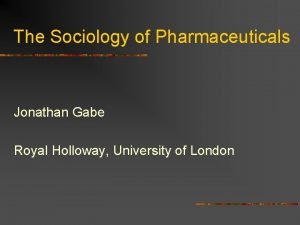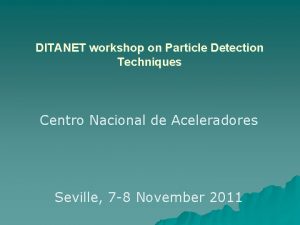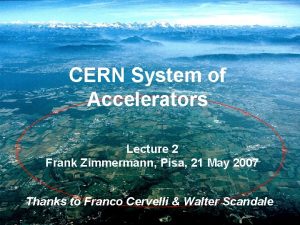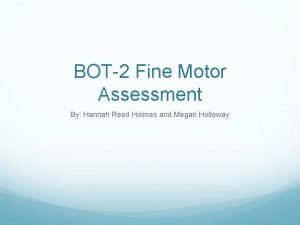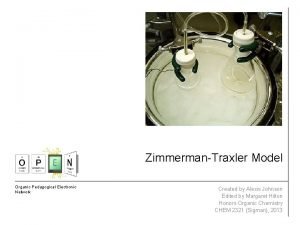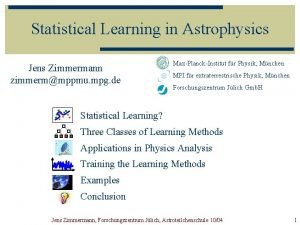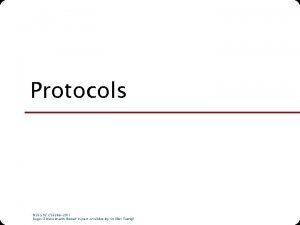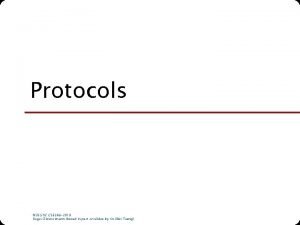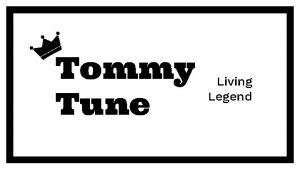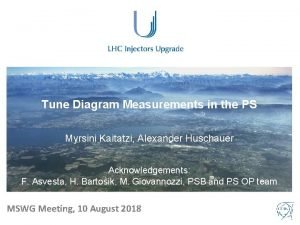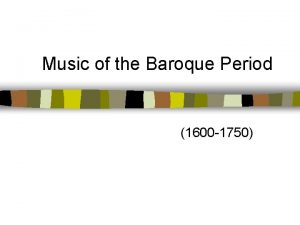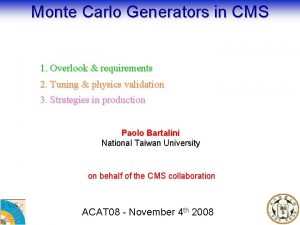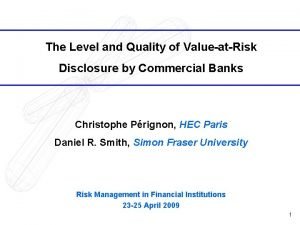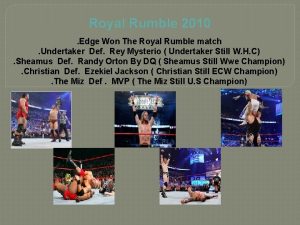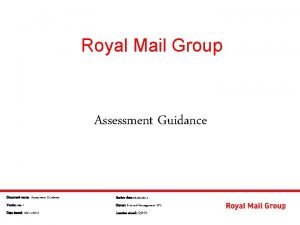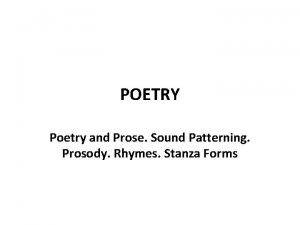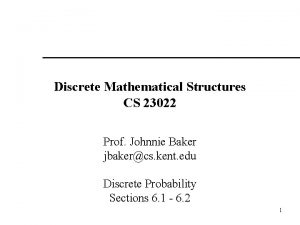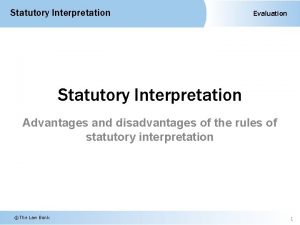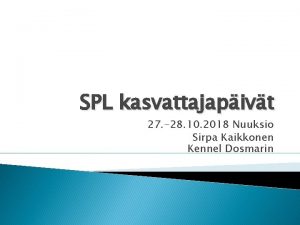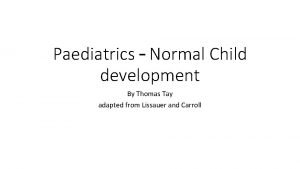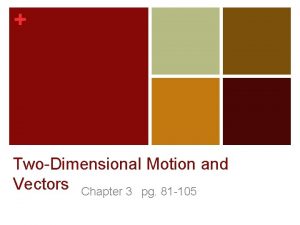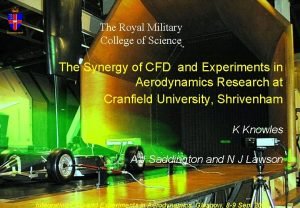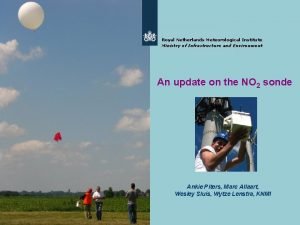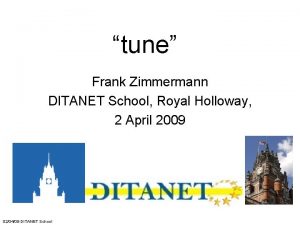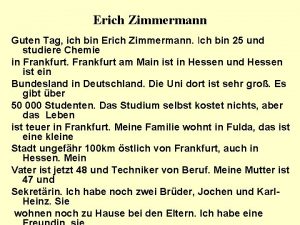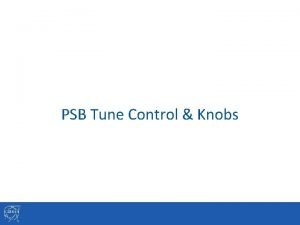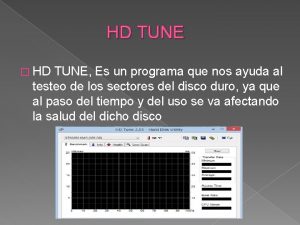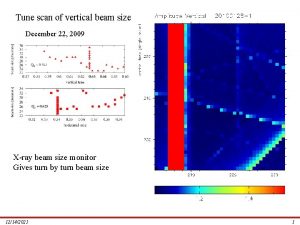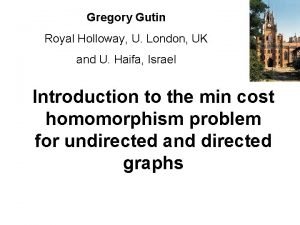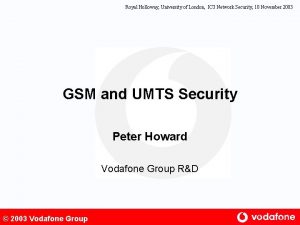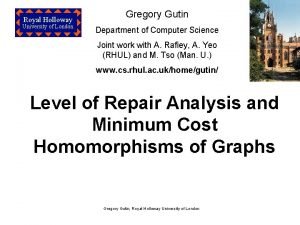tune Frank Zimmermann DITANET School Royal Holloway 2






































![LEP: tune change during damping Q turns [A. -S. Muller] LEP: tune change during damping Q turns [A. -S. Muller]](https://slidetodoc.com/presentation_image_h/e4f4beef1b6432e699e8d37d5c9286a7/image-39.jpg)
![LEP: detuning with amplitude from single kick Q 2 J [A. -S. Muller] LEP: detuning with amplitude from single kick Q 2 J [A. -S. Muller]](https://slidetodoc.com/presentation_image_h/e4f4beef1b6432e699e8d37d5c9286a7/image-40.jpg)































![x [mm] change in apparent closed orbit after ‘kick’ Dynamic aperture experiment in the x [mm] change in apparent closed orbit after ‘kick’ Dynamic aperture experiment in the](https://slidetodoc.com/presentation_image_h/e4f4beef1b6432e699e8d37d5c9286a7/image-72.jpg)




















- Slides: 92

“tune” Frank Zimmermann DITANET School, Royal Holloway, 2 April 2009 02/04/09 DITANET School

outline introduction tune, coherent & incoherent tune, detectors integer betatron tune fractional betatron tune precision measurement, tune tracking, multiple bunches modifications of tune signal damping, filamentation, chromaticity, linear coupling some “complications” colliding beams, space charge, measuring incoherent tune applications tune shift with amplitude, high-order resonances, tune scans, b function measurement, nonlinear field errors synchrotron tune display of complex tune signals

introduction

schematic of betatron oscillation around storage ring tune Qx, y= number of (x, y) oscillations per turn quadrupole magnet (many) focusing elements: quadrupole magnets

schematic of “longitudinal oscillation” around storage ring tune Qs = number of synchrotron oscillations per turn RF cavity focusing elements: energy-dependent path length rf cavities synchrotron tune Qs << 1, typically Qs ~ 0. 01 -0. 0001 betatron tune Qx, y > 1, typically Qx, y ~ 2 - 70

incoherent and coherent tune K. H. Schindl incoherent betatron motion of a particle inside a static beam with its center of mass at rest coherent motion of the whole beam after a transverse kick amplitude and phase are distributed at random over all particles the source of the direct space charge is now moving, individual particles still continue incoherent motion around the common coherent trajectory at low beam intensity these two tunes should be about the same

detectors to measure the coherent beam oscillations button pick ups strip line pick ups unterminated transmission line terminated (rhs) to a matched impedance the LEUTL at Argonne shorted S-band quarter-wave four-plate stripline BPM (courtesy R. M. Lill, 2003) cavity BPMs button electrode for use between the undulators of the TTF II SASE FEL (courtesy D. Noelle and M. Wendt, 2003) TM 010, “common mode” ( I) TM 110, dipole mode of interest reference: “Cavity BPMs”, R. Lorentz (BIW, Stanford, 1998)

Direct Diode Detection Base-Band Q (3 D-BBQ) Measurement in CERN Accelerators - Principle Marek Gasior diode detectors FE electronics: amplifiers & filter pick up Apart from detectors, the filter is most important element of the system. It attenuates revolution frequency and its harmonics, as well as low frequencies. detector FE electronics SPS installation

integer betatron tune

integer part of betatron tune • first turn injection oscillation • or difference orbit after exciting a single steering corrector oscillation count number of oscillations (directly or via FFT) integer value of tune Q more intricate method: use multi-turn BPM data to measure f at each BPM; then find Df between BPMs 02/04/09 DITANET School

example - checking the integer tune LHC beam commissioning 12 September 2008 J. Wenninger integer tunes 64 and 59 equal to their design values! (vertical FFT has second peak!? ) – basic check of optics

fractional betatron tune • precision measurement • tune tracking • multiple bunches

fractional part of the tune – why is it important? one example rms vertical beam size of the electron beam extracted from the SLC damping ring as a function of the vertical betatron tune, under unusually poor vacuum conditions. all nonlinear and high-intensity effects are very sensitive to the fractional tune - best performance requires optimum tune!

two categories: • precision tune measurements • tune tracking to monitor & control fast changes e. g. during acceleration

FFT (Fast Fourier Transform) (1) excite transverse beam motion + detect transverse position on a pick up over N turns (2) compute frequency spectrum of signal; identify betatron tunes as highest peaks step 1/N between points

FFT signal = expansion coefficient Q error of FFT: due to discreteness of steps

checking the fractional tune LHC beam commissioning 10 September 2008 signal decay (due to debunching)

multi-turn orbit measurement for the motion of a single bunch in a 3 -bunch train at LEP-1 signal decay (due to fast head-tail damping) BPM in a dispersive arc region (where transverse position varies with beam momentum) BPM in a straight section without dispersion

FFT power spectra for the two previous measurements b tune synchrotron tune BPM in a dispersive arc region BPM in a straight section without dispersion

about 1000 turns are required for adequate tune measurement with FFT, but • filamentation, damping, … (see later) spurious results? ! further improvement in resolution, e. g. by interpolating the shape of the Fourier spectrum around main peak

assumption: shape = pure sinusoidal oscillation uses Q at peak and highest neighbor error:

further improvement by interpolated FFT with data windowing filter e. g. , Hanning filter of order l: resolution: however, with noise as for the simple interpolation

example: refined FFTs (M. Giovannozzi et al. )

another approach to obtain higher accuracy than FFT “Lomb normalized periodogram” A. -S. Muller no constraint on # data point or on time interval between points (replace Qn by wtn) the constant n 0 is computed to eliminate the phase of the original harmonic; since the phase dependence is removed, Lomb’s method is more accurate than the FFT

Lomb normalized periodogram for previous measurements BPM in a dispersive arc region BPM in a straight section without dispersion (A. -S. Muller)

comparison Lomb-FFT for CERN PS simulation with two spectral lines [A. -S. Muller, ’ 04]]

still an active area of research… most of the above “improvements” rely on harmonic motion

swept frequency excitation measure response vary w in steps amplitude phase 180 o phase jump “beam transfer function”

beam transfer function transverse impedance radiation damping at betatron tune: A zero slope q maximum slope! phase can be monitored by phase-locked loop if beam is excited by VCO lock-in amplifier

phase locked loop (for continuous tune control) “locked” in frequency “lock-in amplifier” VCO frequency = betatron frequency

single bunch multiple bunches fx 0 2 bunches revolution harmonics frev-fx frev 2 frev/2 p mode phase space 3 frev frequency spectrum s mode 0 bumches in phase space for p mode 2 frev/2 at high current fractional tune can be different for s and p modes!

at low current bunch 1 nb bunches bunch 2 f=0: s mode f=p: p mode nb multibunch modes measuring spectrum from 0 to nb frev/2 suffices!

the tune, or not the tune, that is the question

modifications of tune signal • damping • filamentation • chromaticity • linear coupling

tune measurements for proton beams in the CERN-SPS fast decay, ripple & “noise” many lines W. Fischer and F. Schmidt, CERN SL/Note 93 -64 (AP)

tune measurements for proton beams in the CERN-SPS phase-space plot suggests filamentation W. Fischer and F. Schmidt, CERN SL/Note 93 -64 (AP)

coherent oscillations, damping & filamentation response to a kick: coherent damping exp. decay amplitude-dependent oscillation frequency head-tail damping synchrotron-radiation damping bunch population chromaticity

1/t Q’=14 1/(100 turns) Q’=2. 7 1/t. SR LEP 45. 63 Ge. V, damping rate 1/t vs. Ibunch for different chromaticities [A. -S. Muller] horizontal damping partition number Ib
![LEP tune change during damping Q turns A S Muller LEP: tune change during damping Q turns [A. -S. Muller]](https://slidetodoc.com/presentation_image_h/e4f4beef1b6432e699e8d37d5c9286a7/image-39.jpg)
LEP: tune change during damping Q turns [A. -S. Muller]
![LEP detuning with amplitude from single kick Q 2 J A S Muller LEP: detuning with amplitude from single kick Q 2 J [A. -S. Muller]](https://slidetodoc.com/presentation_image_h/e4f4beef1b6432e699e8d37d5c9286a7/image-40.jpg)
LEP: detuning with amplitude from single kick Q 2 J [A. -S. Muller]

another response to a kick: filamentation R. Meller et al. , SSC-N -360, 1987 Z: kick in s a =(2 mw 0)2 Q=Q 0 -ma 2 both different from e-t/t ex. : amplitude in s

amplitude decoherence factor vs. turn number oscillation amplitude 1/5 s kick 5 s kick

chromaticity normalized unnormalized relation chromaticity describes the change of focusing and tune with particle energy usually 2 or more families of sextupoles are used to compensate and control the chromatcity small chromaticity is desired to minimize tune spread and amount of synchrobetatron coupling (maximize dynamic aperture) but large positive chromaticity is often employed to damp instabilities (ESRF, Tevatron, SPS, …)

response to a kick: decoherence due to chromaticity (Q’>0) d<0 t=0 d>0 t=Ts/2 t=Ts

R. Meller et al. , SSC-N -360, 1987 chromaticity large x time small x Ts FFT over small number of turns → widening of tune peak FFT over several synchrotron periods → synchotron sidebands around betatron tune

another method to determine total chromaticity tune shift as a function of rf frequency horizontal tune vs change in rf frequency measured at LEP; the dashed line shows the linear chromaticity as determined by measurements at +/- 50 k. Hz

measuring the natural chromaticity (Q’ w/o sextupoles) from tune shift vs. dipole field electron ring natural chromaticity measured at PEP-II HER for e-, the orbit is unchanged (determined by rf!) for p, simultaneous change in rf frequency required to keep the same orbit:

linear coupling: model of 2 coupled oscillators k: coupling strength normal-mode coordinates: decoupled equations new eigenfrequencies frequency split: measure of strength of coupling

closest tune approach near the difference resonance the tunes of the two eigenmodes, in the vertical plane, are uncoupled tunes can approach each other only up to distance |k_| correction strategy; use two skew quadrupoles (ideally with D(fx-fy)~p/2) to minimize |k_|, namely the distance of closest tune approach

closest tune approach in the PEP-II HER before final correction; shown are the measured fractional tunes as a function of the horizontal tune knob; the minimum tune distance is equal to the driving term |k_| of the difference resonance

another way to measure |k_|: kick response over many turns envelopes of horizontal and vertical oscillations exhibit beating define plane of kick beating period orthogonal plane one can show that ! example ATF

coupling transfer function excite beam in x detect coherent y motion used for continuous monitoring of coupling at the CERN ISR in the 1970 s; is considered for LHC coupling control amplitude and phase of vertical response; complex value of k_ J. -P. Koutchouk, 1980 ISR coupling transfer function

RHIC-Tevatron-LHC 2005

RHIC-Tevatron-LHC 2005

many other complications and challenges, for example: • space charge • ionized gas molecules • electron cloud • beam-beam interaction • radiation damping • . . etc … all these phenomena affect beam response to excitation Courtesy B. Goddard

some “complications”: colliding beam tune spectra space charge tune spread measuring the incoherent tune

transverse tune measurement (swept-frequency excitation) with 2 colliding bunches at TRISTAN. Vertical axis: 10 d. B/div. , horizontal axis: 1 k. Hz/div [K. Hirata, T. Ieiri] Hysteresis: 2 fixed points due to nonlinear beam-beam force

simulated tune spectrum for two colliding beams p mode s mode continuum incoherent spectrum equal intensity ratio 0. 55 p mode not “Landau damped” p mode “Landau damped” M. P. Zorzano & F. Z. , PRST-AB 3, 044401 (2000) W. Herr, M. P. Zorzano, F. Jones, PRST-AB 4, 054402 (2002) if the coherent tune lies outside the continuum “Landau damping” is lost and the beam can be unstable; prediction for the LHC

evidence for coherent beam-beam modes@RHIC BTF amplitude response at 250 Ge. V without collisions H & V signals for beam 1 with pp collisions H & V signals for beam 1 H & V signals for beam 2 p mode? s mode? continuum? 26. February 2009, Michiko Minty

space charge example for space-charge limited synchrotron: betatron tune diagram and areas covered by direct tune spread at injection, intermediate energy, and extraction, for the CERN Proton Synchrotron Booster. During acceleration, acceleration gets weaker and the “necktie” area shrinks, enabling the external machine tunes to move the “necktie” to a region clear of betatron resonances (up to 4 th order) K. H. Schindl

how to measure the incoherent tune shift/spread? K. H. Schindl

Schottky monitor directly measures “incoherent” tune (oscillation frequency of individual particles) w/o centroid motion incoherent signal frequency bandwidth emittance “Schottky monitors” FNAL slotted waveguide 1. 7 -GHz Schottky pickup design #particles stochastic cooling fabricated FNAL Schottky pickup design R. Pasquinelli et al

applications

tune measurements are useful to determine: • beta functions b, coupling strength |k_| • chromaticity x, Q’ • transverse impedance • nonlinear fields an, bn to improve: • dynamic aperture A • emittance e • lifetime t • instability thresholds Ithr

example applications - chromaticity - betatron coupling - damping & decoherence - tune shift with amplitude - high-order resonances - tune scans - b function measurement - measurement of nonlinear field errors

some applications of tune measurements 1. tune shift with amplitude actionanglecoordinates I, y due to nonlinear fields (octupoles, 12 -poles, sextupoles, …) e. g. , use FFT with data windowing accurate tune evaluation over 32 turns

can measure entire curve Q(I) after single injection by calculating Q&I for each time interval (making use of radiation damping) Measurement of tune shift with amplitude in LEP at 20 Ge. V using a high-precision FFT tune analysis

2. higher-order resonances k, l, p integer excited by nonlinear fields distortion in phase space chaos, dynamic aperture, particles loss …

islands of 3 rd order resonance 3 Qx=p separatrix linear motion dynamic aperture

tune vs. amplitude resonance

phase-space distortion additional lines in Fourier spectrum line at Qx resonance lines at Qx, at 2 Qx, at 4 Qx in x signal in y signal no line at 3 Qx! reconstruct nonlinearities from FFT SUSSIX
![x mm change in apparent closed orbit after kick Dynamic aperture experiment in the x [mm] change in apparent closed orbit after ‘kick’ Dynamic aperture experiment in the](https://slidetodoc.com/presentation_image_h/e4f4beef1b6432e699e8d37d5c9286a7/image-72.jpg)
x [mm] change in apparent closed orbit after ‘kick’ Dynamic aperture experiment in the CERN SPS (~1995). Beam was kicked at about turn 100. Change in offset related to (1, 0) resonance or (0, 0) line [Courtesy F. Schmidt, 2000]. turn

FFT amplitude many more lines in frequency spectrum! FFT of beam position, evidencing nonlinear resonance lines [Courtesy F. Schmidt, 2000] fractional tune

Ph. D. thesis R. Tomas, 2003 amplitude of (-2, 0) line vs. longitudinal position for a hypothetical ring with three sextupoles – the strength of the nonlinear line depends on s

Ph. D. thesis R. Tomas, 2003 measurement compared with simulation for the SPS; locations of 7 strong sextupoles are indicated

example - checking the coupling strength LHC beam commissioning 11 September 2008 R. Tomas beating confirms x-y tune split by 5 integers!

3. tune scans beam lifetime dynamic aperture beam-beam interaction sensitive to tunes! measure higher-order resonances appear as tune diagram stripes with reduced lifetime • identify (&compensate) harmful resonances • find optimum working point • compare with simulations

dynamic aperture simulation; tune scan around 24. 709 (x), 23. 634 (y) measured beam lifetime around same working point different slope attributed to calibration error of tune knobs PEP-II HER [Y. Cai, 1998]

4. measuring the b function with “K modulation” vary quadrupole strength DK, detect tune change DQ, obtain b at quadrupole if and (tune not near integer or half integer)

quality of approximation

measurement prediction including “exact” nonlinear dependence prediction of linear approximation Optics test in Fermilab Recycler Ring, March 2000. Betatron tunes vs. strength of quadrupole QT 601.

5. tune based reconstruction of local nonlinear field errors Betatronic motion Deformed closed orbit General tune response for sextupolar and octupolar errors when deforming CO with steerers The element of the nonlinear tune response matrix are G. Franchetti, A. Parfenova, I. Hofmann PRTAB 11, 094001 (2008) G. Franchetti Feed-down Nonlinear error

Tune measurements in SIS From the ``slopes’’ x. Qxi the probing sextupolar errors can be reconstructed A. Parfenova, Ph. D Thesis 2008, Frankfurt University A. Parenova, G. Franchetti, I. Hofmann Proc. EPAC 08, THPC 066, p. 3137 G. Franchetti

synchrotron tune

LEP model for synchrotron tune determined with 10 -3 precision voltage calibration from localization of rf cavities (computed) energy loss due to SR and impedance synchrotron tune as a function of total rf voltage in LEP at 60. 6 Ge. V; the two curves are fits to the 640 m. A and 10 m. A data; tfe difference due to current-dependent parasitic modes is clearly visible (A. -S. Muller)

if the energy is known at one point, i. e. , on a spin resonance, the rf voltage can be calibrated from the Qs vs Vc curve fitted beam energy known from resonant depolarization (A. -S. Muller) voltage calibration factor g

display of complex tune signals

3 D-“BBQ”-Measurement in CERN SPS WITHOUT ANY EXTERNAL EXCITATION fixed target beam SPS spectrum 1, studies of the transverse damper influence on the tune path width LHC beam M. Gasior LHC beam

SPS continuous tune measurement example M. Gasior SPS spectrum 2 zoom on low frequency synchrotron sidebands of the revolution frequency bizarre resonance occurred when one bunch LHC beam was going coast, measured during LHC collimator studies on 12/10/04

continuous BBQ tune diagnostics at the CERN SPS M. Gasior

summary introduction tune, coherent & incoherent tune, detectors integer betatron tune fractional betatron tune precision measurement, tune tracking, multiple bunches modifications of tune signal damping, filamentation, chromaticity, linear coupling some “complications” colliding beams, space charge, measuring incoherent tune applications tune shift with amplitude, high-order resonances, tune scans, b function measurement, nonlinear field errors synchrotron tune display of complex tune signals

further literature CARE-HHH-ABI workshop on Schottky, Tune and Chromaticity Diagnostics (with Real-Time Feedback), Chamonix, France, 11 -13 December 2007, Proceedings CARE-Conf-08 -003 -HHH (editor Kay Wittenburg) more examples and other types of measurements may be found in this book Measurement and Control of Charged Particle Beams M. G. Minty, F. Zimmermann, Springer Verlag, Berlin, N. Y. , Tokyo, 2003.
 Myview royal holloway
Myview royal holloway Royal holloway sociology
Royal holloway sociology Royal holloway english department
Royal holloway english department Royal holloway semester dates
Royal holloway semester dates Ditanet
Ditanet Frank zimmermann cern
Frank zimmermann cern Aisha holloway
Aisha holloway Vikki holloway
Vikki holloway Bot-2 메뉴얼
Bot-2 메뉴얼 Georgetta holloway
Georgetta holloway Frank william abagnale jr wife
Frank william abagnale jr wife Knowledge graphs antoine zimmermann
Knowledge graphs antoine zimmermann Sap
Sap Angelika zimmermann
Angelika zimmermann Zimmerman-traxler model
Zimmerman-traxler model Zimmermann
Zimmermann Zimmermann
Zimmermann Kaido zimmermann cv
Kaido zimmermann cv Zimmermann telegram cartoon
Zimmermann telegram cartoon Moritz zimmermann sap
Moritz zimmermann sap Ipa mediamatiker beispiele
Ipa mediamatiker beispiele Roger zimmermann
Roger zimmermann Tommy tune bio
Tommy tune bio Staples copy and print prices
Staples copy and print prices Hd tune
Hd tune It is possible to fine-tune your emotional style by
It is possible to fine-tune your emotional style by Final intonation patterns
Final intonation patterns Fine tune pay rates
Fine tune pay rates Tune diagram
Tune diagram Homphonic
Homphonic Tune cms integration
Tune cms integration Bars of rage
Bars of rage Our vacuum hums a happy tune while it cleans.
Our vacuum hums a happy tune while it cleans. Tune cms integration
Tune cms integration Train tune poem
Train tune poem Tune blessing
Tune blessing Hymn 118
Hymn 118 Bel royal school
Bel royal school Romero britto royal family
Romero britto royal family Jesus royal bloodline
Jesus royal bloodline Battle royal in invisible man
Battle royal in invisible man Royal surrey county hospital address
Royal surrey county hospital address Www.bf.tku.edu.tw/files/news chapter 17
Www.bf.tku.edu.tw/files/news chapter 17 Royal paragon hall capacity
Royal paragon hall capacity Copenhagen university library
Copenhagen university library Windsor royal family tree
Windsor royal family tree Royal road location
Royal road location Royal road in persia
Royal road in persia Royal bank of canada
Royal bank of canada The uk royal family tree
The uk royal family tree English royal patent of 1662
English royal patent of 1662 Royal hierarchy england
Royal hierarchy england Royal london medical underwriting limits
Royal london medical underwriting limits Royal rumble 2010 edge
Royal rumble 2010 edge Royal rangers tracclub
Royal rangers tracclub Royal psalms
Royal psalms Royal mail online assessment test answers
Royal mail online assessment test answers Types of insurance in bhutan
Types of insurance in bhutan Royal electronic factory
Royal electronic factory Royal college of occupational therapists
Royal college of occupational therapists Prosody
Prosody Nato sequence of orders
Nato sequence of orders Raouf oufkir
Raouf oufkir Royal mindseto
Royal mindseto Jesus bloodline
Jesus bloodline Royal lifeboat service
Royal lifeboat service Royal family tree england
Royal family tree england Hesse family tree
Hesse family tree Royal flush probability
Royal flush probability Consultingafrica
Consultingafrica Lafayette cartoon marie antoinette
Lafayette cartoon marie antoinette Avtex front royal va
Avtex front royal va The purposive approach advantages and disadvantages
The purposive approach advantages and disadvantages Donattaren kennel
Donattaren kennel Royal icing ce
Royal icing ce London royal docks map
London royal docks map Conceptual unity art
Conceptual unity art Polysyllabic babble
Polysyllabic babble Cigaronne extra long
Cigaronne extra long Nil nisi clavis deest
Nil nisi clavis deest Royal dutch visio
Royal dutch visio Bintang iklan nutrilon royal
Bintang iklan nutrilon royal Cindy royal
Cindy royal Star of wonder star of night star of royal beauty bright
Star of wonder star of night star of royal beauty bright The royal gorge bridge in colorado rises 321
The royal gorge bridge in colorado rises 321 Royal military college of science
Royal military college of science Compare and contrast trustee period and royal colony
Compare and contrast trustee period and royal colony Royal netherlands meteorological institute
Royal netherlands meteorological institute Functions of royal monetary authority of bhutan
Functions of royal monetary authority of bhutan Royal skin care
Royal skin care Royal electronic factory
Royal electronic factory Compare and contrast trustee and royal georgia
Compare and contrast trustee and royal georgia Royal infirmary edinburgh
Royal infirmary edinburgh

